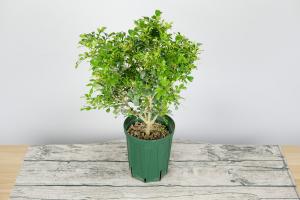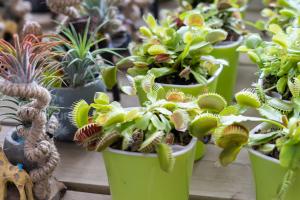Introduction
The natural world is full of diversity, and plant life is no exception. One of the most fascinating groups of plants are nonvascular plants. Unlike vascular plants, nonvascular plants do not have a system of tubes to transport water and nutrients throughout their bodies. This leads to an interesting question: what do nonvascular plants use to transport water and nutrients?
No Vascular System
Nonvascular plants are relatively simple in structure, lacking a specialized vascular system for water and nutrient transport. They lack the xylem and phloem that are found in vascular plants, which allows for the transport of water and nutrients from the roots to the rest of the plant. Because of this, nonvascular plants must rely on other mechanisms to move water and nutrients throughout their bodies.
One such mechanism is osmosis, which is the diffusion of water molecules from an area of high concentration to an area of low concentration. Nonvascular plants are able to absorb water through their cells via osmosis, which allows them to transport water from the soil throughout their bodies. However, this is not the only way that nonvascular plants transport water.
Capillary Action
Another way that nonvascular plants transport water is through capillary action. Capillary action occurs when water moves through narrow spaces due to the forces of surface tension and adhesion. Nonvascular plants have tiny, hair-like structures on their leaves and stems called rhizoids. These structures are able to absorb water from the surrounding environment due to capillary action, allowing nonvascular plants to transport water from areas with higher moisture levels to drier areas within their bodies.
While capillary action is an important mechanism for nonvascular plants to transport water, it is not the only mechanism that they use. Nonvascular plants have also developed other methods to transport nutrients throughout their bodies.
Nutrient Transport
Nutrient transport is a critical process for all plants, as it allows them to synthesize the molecules they need for growth and reproduction. Nonvascular plants are able to transport nutrients via diffusion, which is the movement of molecules from an area of high concentration to an area of low concentration. This allows nonvascular plants to absorb nutrients from the surrounding environment and distribute them throughout their bodies.
Nonvascular plants have also developed other mechanisms for nutrient transport. One such mechanism is the production of specialized structures called gemmae cups. Gemmae cups are found in some nonvascular plants such as liverworts, and they are cup-shaped structures that produce gemmae, which are small clumps of cells that can grow into new plants. These gemmae cups are able to absorb nutrients from the surrounding environment, allowing the plant to transport nutrients directly to the gemmae.
Conclusion
In conclusion, nonvascular plants have developed a variety of mechanisms to transport water and nutrients throughout their bodies. Although they lack a specialized vascular system, nonvascular plants are able to absorb water via osmosis, transport water via capillary action, and transport nutrients via diffusion and specialized structures such as gemmae cups. These remarkable adaptations allow nonvascular plants to thrive in a wide range of environments and make them an integral part of the natural world.

 how many times do yo...
how many times do yo... how many planted tre...
how many planted tre... how many pine trees ...
how many pine trees ... how many pecan trees...
how many pecan trees... how many plants comp...
how many plants comp... how many plants can ...
how many plants can ... how many plants and ...
how many plants and ... how many pepper plan...
how many pepper plan...































